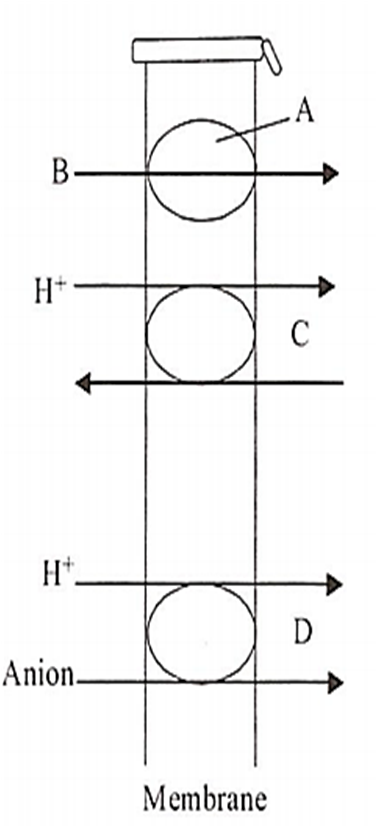 Multiple Choice Questions
Multiple Choice QuestionsIn a normal adult, ascending order of concentration of following molecules is
K>Na>Fe>Cu
Na>K>Cu>Fe
Fe> Na> K > Cu
Na> Fe> K > Cu
Select the option having all correctly matched pairs.
A. Alkaloids (i) Carotenoid; Anthocyanin
B. Pigments (ii) Vinblastin; curcumin
C. Drugs (iii) Morphine; Codeine
A-i; B-ii;C-iii
A-ii; B-iii; C-i
A-iii; B-i; C-ii
A-i; B-iii; C-ii
Assertion: Excess Mn in soil, can adversely decrease Mg, Fe and Cu concentrations in the soil.
Reason: Mn increases rate of photosynthesis, thereby increasing absorption of Mg, Fe and Ca from soil.
If both assertion and reason are true and reason is the correct explanation of assertion.
If both assertion and reason are true but reason is not the correct explanation of assertion.
If assertion is true but reason is false.
If both assertion and reason are false
Assertion : All proteinecous enzymes have a three-dimensional structure.
Reason : The secondary structure of protein is according to amino acid present inside the polypeptides.
If both assertion and reason are true and reason is the correct explanation of assertion.
If both assertion and reason are hue but reason is not the correct explanation of assertion.
If assertion is true but reason is false.
If both assertion and reason are false.
Assertion : Glutamine contains amide group.
Reason : Isoelectric point of glutamine is 7.
If both assertion and reason are true and reason is the correct explanation of assertion.
If both assertion and reason are hue but reason is not the correct explanation of assertion.
If assertion is true but reason is false.
If both assertion and reason are false.
What do A, B, C and D represent in the following figure?

A : carrier protein, B: symport, C: uniport, D : antiport
A : carrier protein, B : uniport, C: antiport, D : symport
A: carrier protein, B: antiport, C: symport, D : uniport
A : carrier protein, B: uniport, C: symport, D : antiport
Which one of the following depresses brain activity and produces feelings of calmness, relaxation and drowsiness?
Morphine
Valium
Amphetamines
Hashish
Assertion: Enzymes lower down the activation energy of the reactant molecule to make its transition into product easier.
Reason: Enzymes are highly substrate specific catalysts.
If both assertion and reason are true and reason is the correct explanation of assertion
If both assertion and reason are true but reason is not the correct explanation of assertion
If assertion is true but reason is false
If both assertion and reason are false.
B.
If both assertion and reason are true but reason is not the correct explanation of assertion
Enzymes are highly substrate specific i.e. they catalyze the reaction of a particular substrate only. They facilitate occurrence of a reaction and transition of reactant into product.
A chemical reaction SP (where S is the substrate and P the product or products) will take place when a certain number of S molecules at any given instant possess enough energy to attain an activated condition called the 'transition state'. The enzyme combines transiently with the substrate to produce a transient state having a lower energy of activation than that of substrate alone. This results in acceleration of the reaction. Once the products are formed, the enzyme (or catalyst) is free or regenerated to combine with another molecule of the substrate and repeat the process.
